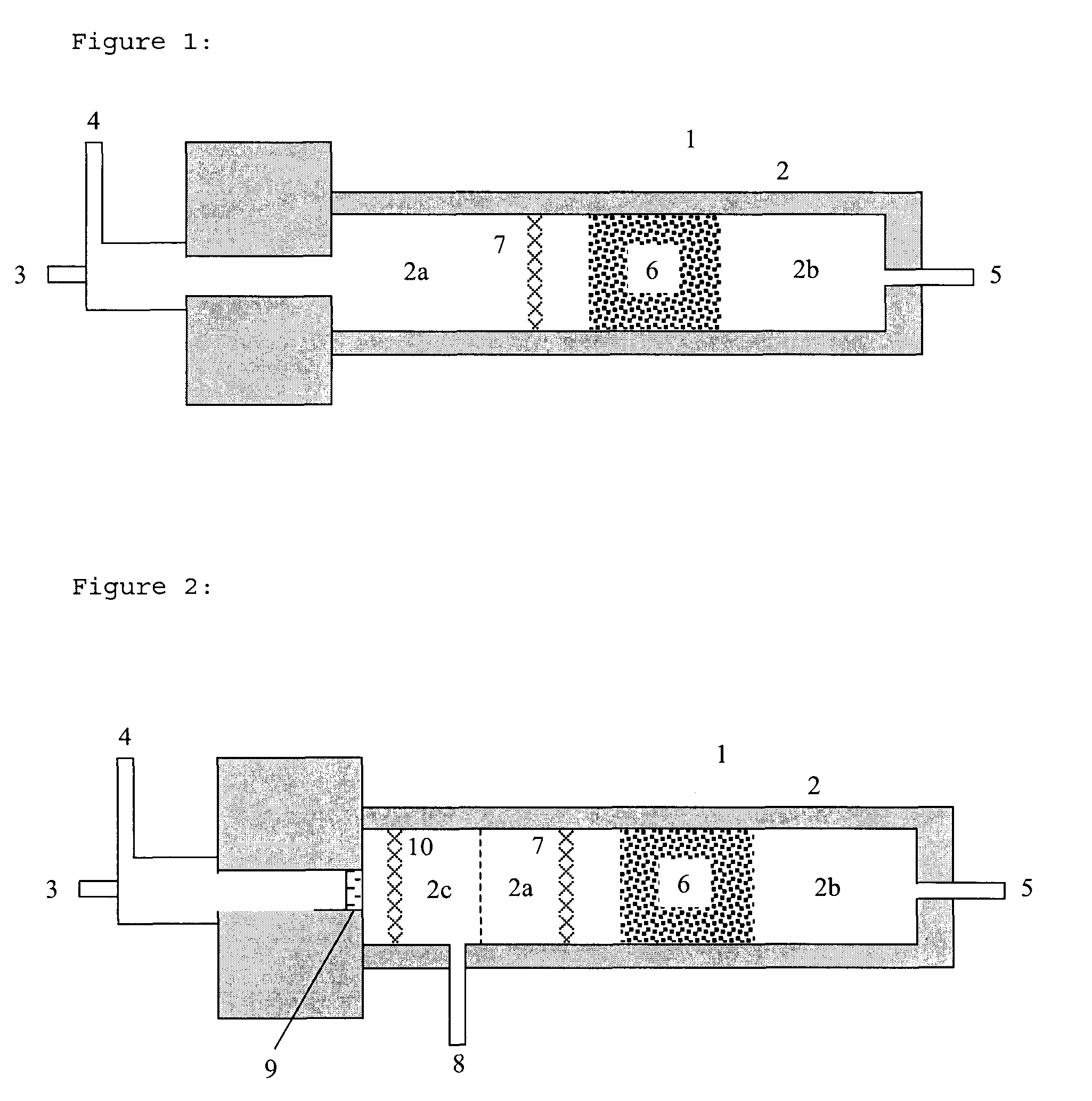Process for the production of hydrogen
a hydrogen and process technology, applied in the field of process for hydrogen production, can solve the problems of fuel conversion and hydrogen yield decline, and achieve the effects of reducing the downtime needed for reactivation or exchange, prolonging the active catalyst life, and reducing the need for feedstock conversion
- Summary
- Abstract
- Description
- Claims
- Application Information
AI Technical Summary
Benefits of technology
Problems solved by technology
Method used
Image
Examples
example 1
[0045]A diesel fuel (ARCO Ultra Low Sulphur Diesel #2) was converted to a hydrogen-comprising gas over a catalyst. Molecular oxygen was supplied comprised in a gas (exhaust gas) with a composition, which resembles diesel exhaust gas, the composition is shown in table 1. The decay of the average hydrogen concentration in the product gas was followed during the on-period (reaction time interval). During the on-period, diesel fuel and exhaust gas were supplied to the catalyst with an oxygen-to-carbon ratio of 0.53[−]. During the off-period (regeneration time interval) the catalyst was contacted with a mixture of diesel and exhaust gas having an oxygen-to-carbon ratio of 3.7[−]. During the off-period the mixture was ignited using a glow element powered at 7 V and 17 A. The gas inlet temperature was 125° C. and the fuel was in the vapour phase.
[0046]Table 2 shows the observed rate of decay for the average hydrogen concentration in the product gas for different off-period and on / off ratio...
example 2
[0049]A diesel fuel (ARCO Ultra Low Sulphur Diesel #2) was converted to a hydrogen-comprising gas over a partial oxidation catalyst. The duration of the on-period (reaction time interval) was 180 seconds. Diesel fuel and exhaust gas were supplied to the catalyst with an oxygen-to-carbon ratio of 0.53. The duration of the off-period (regeneration time interval) was 5 seconds. During the off-period the catalyst was contacted with a mixture of diesel and exhaust gas having an oxygen-to-carbon ratio of 3.7. Prior to contacting the catalyst, the mixture was ignited using a glow element powered at 8 V and 17 A.
[0050]For a period of 90 minutes, a hydrogen-comprising gas was produced following a process according to the invention and a steady state process, i.e. continuous partial oxidation. The mixture of diesel and exhaust gas was introduced at a temperature of 125° C. In Table 3, the obtained values for the hydrogen yield and diesel conversion are reported. It will be clear form table 3 ...
PUM
| Property | Measurement | Unit |
|---|---|---|
| time interval | aaaaa | aaaaa |
| boiling point | aaaaa | aaaaa |
| regeneration time | aaaaa | aaaaa |
Abstract
Description
Claims
Application Information
 Login to View More
Login to View More - R&D
- Intellectual Property
- Life Sciences
- Materials
- Tech Scout
- Unparalleled Data Quality
- Higher Quality Content
- 60% Fewer Hallucinations
Browse by: Latest US Patents, China's latest patents, Technical Efficacy Thesaurus, Application Domain, Technology Topic, Popular Technical Reports.
© 2025 PatSnap. All rights reserved.Legal|Privacy policy|Modern Slavery Act Transparency Statement|Sitemap|About US| Contact US: help@patsnap.com



